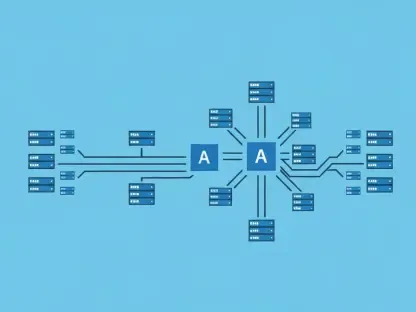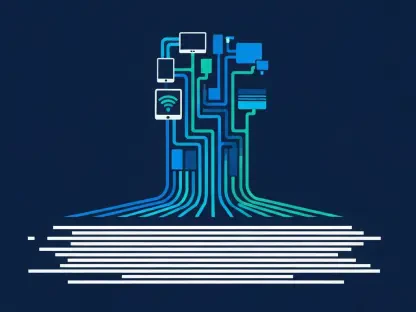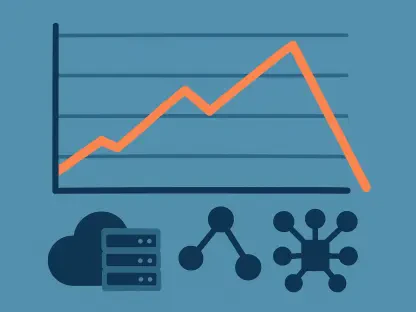Artificial intelligence (AI) is significantly transforming various industries, and software development is no exception. The integration of AI tools has revolutionized how developers approach coding, web/app development, and other supplementary tasks, aiming to simplify, accelerate, and optimize the entire workflow. Whether you are a novice or an experienced developer, these advancements offer valuable assistance, enhancing efficiency, productivity, and overall code quality.
AI in Coding Assistance
Autocompletion and Intelligent Coding Suggestions
AI tools like GitHub Copilot, Tabnine, and Amazon CodeWhisperer are at the forefront of coding assistance, offering advanced autocompletion capabilities. These tools predict and suggest code snippets as developers type, reducing the time spent on writing repetitive code. GitHub Copilot, for instance, leverages machine learning models to analyze context and propose relevant completions, enabling developers to focus on complex coding tasks rather than mundane syntax errors. By integrating seamlessly with popular coding environments, these tools make the coding process smoother and more intuitive, particularly beneficial for novice developers who may struggle with syntax and structure.Additionally, these AI tools improve coding efficiency by analyzing natural language prompts to provide relevant coding suggestions. This means that developers can describe the functionality they need in plain English and receive corresponding code snippets, making it easier to implement complex features without diving deep into technical documentation. Amazon CodeWhisperer, for example, enhances this capability by understanding the project context and offering tailored solutions that align with the specific requirements. Overall, these tools help developers tackle complex problems more effectively and efficiently, ensuring that their code is not only functional but also optimized.
Code Queries and Autogenerated Comments
Another significant feature of AI coding assistants is their ability to facilitate code queries and generate meaningful comments automatically. Sourcegraph Cody and JetBrains AI are particularly adept at this, allowing developers to query their codebase to locate specific functions or gain a deeper understanding of intricate code segments. For instance, if a developer is unsure about a particular function’s purpose, these tools can quickly provide explanations and references to similar use cases within the codebase. This capability is invaluable for large projects with multiple contributors, where understanding existing code can be a time-consuming and challenging task.Autogenerated comments are another game-changer, enhancing code readability and maintainability. JetBrains AI, for example, can automatically insert comments that describe what a piece of code does, helping other team members to understand the logic without combing through lines of code. These comments are generated using context-aware analysis, ensuring that they are accurate and informative. This feature not only saves developers time but also encourages better coding practices, making the entire codebase more accessible and easier to maintain. Enhanced readability and maintainability ensure smoother collaboration within development teams, leading to more efficient and high-quality software products.
Interactive AI Assistance
AI-powered assistants engage developers in interactive conversations, offering real-time troubleshooting, code optimization, and alternative solution exploration. Tools like GitHub Copilot and Amazon CodeWhisperer can provide on-the-spot solutions for coding problems, making the development process less frustrating and more educational. This interactive aspect fosters a continuous learning environment, where developers can understand the rationale behind suggested changes and apply this knowledge to future projects. The ability to receive instant feedback and adjustments helps developers refine their skills and produce cleaner, more efficient code.Moreover, AI assistants can explore alternative solutions for a given problem, offering multiple ways to achieve the same goal. This feature is particularly beneficial for optimizing code, as it introduces developers to more efficient or effective methods they might not have considered. Interactive AI assistance also serves as a valuable learning tool for junior developers, who can gain insights into advanced coding techniques and best practices. By engaging in real-time conversations with AI, developers of all skill levels can enhance their coding expertise, leading to more innovative and robust software solutions.
AI in Web/App Development
Automated UI Generation
AI tools are also making significant strides in web and app development. Tools like UIzard can automatically create visually appealing and functional user interfaces, transforming the way developers approach front-end design. By generating UI components swiftly, these tools save a considerable amount of time that developers would otherwise spend on design and implementation. For instance, UIzard uses AI algorithms to analyze design preferences and generate a cohesive UI that aligns with the overall aesthetic goals of the project. This not only accelerates the design process but also ensures consistency across different sections of the application.Furthermore, automated UI generation allows developers to focus more on backend functionality and user experience rather than getting bogged down by design details. By offloading the UI design to AI, developers can ensure that the interface is user-friendly and accessible, incorporating best practices that may otherwise be overlooked. This leads to more intuitive user experiences and higher user satisfaction. Additionally, AI-generated UIs can be easily modified and customized, offering flexibility and adaptability as project requirements evolve. Overall, these tools enable developers to deliver stunning and functional digital experiences more efficiently.
Seamless Design-to-Development Workflow
Locofy is an AI tool that bridges the gap between design and development by seamlessly importing designs directly from popular tools like Figma. This integration streamlines the transition from design to development, ensuring that the final product stays true to the original design while significantly reducing manual coding efforts. By importing Figma designs, Locofy translates graphical elements into coded components, making it easier for developers to implement the intended design without having to recreate it from scratch. This not only saves time but also ensures that the design vision is accurately realized in the final product.Moreover, this seamless workflow integration eliminates the communication barriers that often exist between design and development teams. By providing a shared platform for both designers and developers, Locofy fosters better collaboration and alignment. Designers can see how their designs will look and function in a live environment, while developers can focus on backend logic and functionality. This cohesive approach reduces the likelihood of design discrepancies and ensures a smoother, more efficient development cycle. Ultimately, tools like Locofy enhance the overall quality of the software by maintaining design integrity and improving collaborative efforts between teams.
Simplified Website and App Creation
AI tools like CodeWP and Literally Anything simplify the creation of websites and apps, making development more accessible to a broader audience. CodeWP focuses on streamlining the WordPress website creation process by managing coding and layout, enabling developers to concentrate on content and customization. This tool provides AI-powered templates and modules that can be easily customized to meet specific project needs. By handling the technical aspects of website creation, CodeWP allows even those with minimal coding experience to create professional and functional websites, democratizing access to web development.Similarly, Literally Anything allows for the quick development of small-scale applications with minimal coding knowledge. This tool uses AI to generate code snippets based on user input, enabling non-developers to build functional apps without needing extensive technical expertise. This accelerates the development cycle and allows for rapid prototyping and iteration. Both CodeWP and Literally Anything aim to lower the barriers to entry for web and app development, encouraging more people to explore and exploit the possibilities of digital creation. This not only fosters innovation but also expands the talent pool in the tech industry, driving further advancements.
Supplementary AI Tools for Development
AI-Driven Testing and Robustness
Beyond core development tasks, supplementary AI tools play a crucial role in ensuring code quality and reliability. CodiumAI provides AI-generated test suggestions, helping developers write robust and error-free code. AI-driven testing tools like CodiumAI analyze the codebase and generate comprehensive test scenarios that cover edge cases and potential vulnerabilities. This ensures that the software performs reliably across various conditions, minimizing the risk of bugs and errors in the final product. By automating the test generation process, these tools save developers time and effort, allowing them to focus on more critical aspects of the project.Moreover, AI-driven testing tools enhance the overall robustness of the code by identifying potential issues that developers might overlook. These tools can simulate real-world scenarios and user interactions, providing valuable insights into how the software will perform in different environments. This proactive approach to testing leads to more reliable and resilient software, reducing the need for extensive bug fixes and updates post-deployment. By integrating AI-driven testing into the development workflow, developers can ensure that their code meets high-quality standards, resulting in better user experiences and long-term software success.
Automated Documentation and Knowledge Search
Creating and maintaining documentation is often a tedious task for developers. Miro Writer resolves this by automatically generating comprehensive and well-structured documentation. This feature facilitates easier maintenance and project sharing, enhancing team collaboration. By leveraging AI, Miro Writer can analyze code and generate detailed descriptions, usage instructions, and examples, making it easier for other team members to understand and work with the codebase. This automated documentation process not only saves time but also ensures consistency and accuracy, reducing the likelihood of misunderstandings and errors.Additionally, tools like Find act as AI-powered coding search engines, allowing developers to quickly search for coding questions and solutions. Find can sift through vast amounts of coding resources and documentation to provide relevant answers and guidance, speeding up problem-solving and knowledge acquisition. This real-time access to information empowers developers to overcome challenges more efficiently and continue their work without significant disruptions. By integrating automated documentation and knowledge search tools into the development workflow, teams can enhance their productivity and collaboration, leading to more successful and streamlined projects.
Streamlined Development Workflow
These supplementary tools collectively streamline essential development tasks, allowing developers to focus on more critical aspects of their projects. By reducing the burden of routine tasks such as testing and documentation, these AI tools enhance overall productivity and project efficiency. For example, CodiumAI’s automated testing suggestions ensure that the code is robust and reliable, while Miro Writer’s auto-generated documentation facilitates better communication and understanding within the team. This enables developers to dedicate more time to innovative problem-solving and feature development, driving higher-quality outcomes.Moreover, the integration of AI tools into the development workflow promotes best practices and standardization. By providing consistent and reliable solutions for common tasks, these tools help maintain a higher level of code quality and project management. For instance, AI-driven testing tools ensure thorough and accurate testing, which reduces the likelihood of bugs and errors. Automated documentation tools guarantee that project documentation is always up-to-date and comprehensive, fostering better collaboration and knowledge sharing. Overall, these supplementary AI tools play a vital role in optimizing the development workflow, making the process more efficient, effective, and enjoyable for developers.
Overarching Trends in AI Adoption
Increased Efficiency and Productivity
The adoption of AI tools in software development is primarily driven by the need for increased efficiency and productivity. By automating routine and repetitive tasks, these tools save valuable time and reduce the manual effort required in the development process. Developers can then allocate more time to creative and complex problem-solving activities. For instance, AI-driven autocompletion and code suggestion tools streamline the coding process, allowing developers to write more code in less time. This not only accelerates the development cycle but also enhances the overall quality of the software by reducing the likelihood of errors.Moreover, AI tools facilitate more efficient project management by automating administrative tasks such as documentation and testing. This frees up developers to focus on higher-level strategic goals and innovation. The increased productivity resulting from AI adoption enables development teams to meet tight deadlines and deliver projects more quickly, giving them a competitive edge in the fast-paced tech industry. Overall, the integration of AI into software development workflows significantly enhances efficiency and productivity, allowing developers to achieve more in less time and with fewer resources.
Error Reduction and Code Quality
One of the key benefits of AI-driven tools is the reduction in human errors. Intelligent suggestions and autogenerated comments help minimize coding mistakes and enhance overall code quality. For example, tools like JetBrains AI and GitHub Copilot provide context-aware suggestions and code completions that reduce the likelihood of syntax errors and logical flaws. By ensuring that the code adheres to best practices and standards, these tools help maintain a high level of code quality throughout the development process. This results in more reliable and maintainable software that delivers a better user experience and requires less post-deployment maintenance.Additionally, AI-driven testing tools like CodiumAI play a crucial role in identifying and mitigating potential issues before they reach production. By providing comprehensive and intelligent test suggestions, these tools ensure that the software is thoroughly tested and free of critical bugs. This proactive approach to testing enhances the overall robustness of the code, making it more resilient to unexpected conditions and edge cases. By integrating AI-driven error reduction and quality assurance tools into their workflows, developers can produce higher-quality software that meets or exceeds user expectations.
Enhanced Collaboration and Workflow Integration
AI tools like Miro Writer and Locofy play a pivotal role in enhancing team collaboration and workflow integration. By generating detailed and easily understandable documentation, Miro Writer facilitates better communication within development teams. This ensures that all team members have access to the information they need and can work together more effectively. Enhanced documentation also makes it easier to onboard new team members and share knowledge across the organization. This collaborative approach fosters a more cohesive and productive development environment, where team members can leverage each other’s strengths and insights.Locofy, on the other hand, ensures a smooth transition from design to development, integrating various stages of the workflow seamlessly. By importing designs directly from tools like Figma, Locofy bridges the gap between designers and developers, ensuring that the final product stays true to the original design vision. This integration reduces the likelihood of design discrepancies and ensures a more streamlined and efficient development process. Overall, AI tools that enhance collaboration and workflow integration contribute to a more harmonious and productive development environment, where teams can work together more effectively to deliver high-quality software.
Lowering Entry Barriers for Beginners
Artificial intelligence (AI) is making a profound impact on a multitude of industries, and software development is undoubtedly one of the most affected. The incorporation of AI tools into the development process has transformed the way developers approach coding, web and app development, as well as a broad range of supplementary tasks. These AI-driven solutions aim to simplify, speed up, and optimize the entire workflow, allowing both novice and seasoned developers to work more efficiently. Through AI, developers can automate repetitive tasks, detect and fix bugs more accurately, and even predict potential issues before they arise. This not only accelerates the development cycle but also significantly enhances the quality of the code produced. Moreover, AI tools can provide insightful analytics and personalized recommendations, enabling developers to make more informed decisions. Consequently, the integration of AI in software development is proving to be an invaluable asset, boosting productivity, efficiency, and overall code quality to an unprecedented level.









